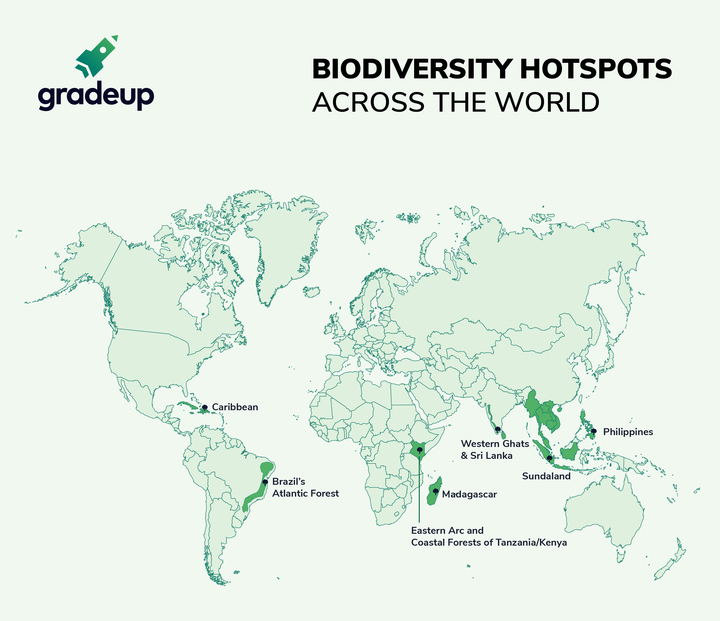The term ‘hot spot’ was introduced by N. Myers in 1988 for those geographical regions particularly rich in ‘endemic’, ‘rare’ and ‘threatened’ species found in relatively small areas but facing significant threats to habitat loss.
Presently, there are 36 areas across the globe that qualify as hotspots. They represent 2.4% of the Earth’s land surface but support more than half of the world’s plant species as endemics — and nearly 43% of bird, mammal, reptile and amphibian species as endemics.
The 36 ecological hotspots are home to 2 billion people and provide crucial ecosystems services for human life and livelihood.
For any area to qualify as a biodiversity hotspot, the following two criteria’s must be met:
The area must contain at least 1,500 species of endemic vascular plants.The area must have lost at least 70 per cent of its primary native vegetation.
Biodiversity Hotspots Across the World
The eight hottest hot spots in terms of the above factors are:
MadagascarPhilippinesSundaland [South East Asia]Brazil’s Atlantic ForestCaribbeanIndo-BurmaThe Western Ghats and Sri LankaEastern Arc and Coastal Forests of Tanzania/Kenya

There are 4 biodiversity hot spots present in India. They are:
The Eastern Himalayas [Arunachal Pradesh, Bhutan, Eastern Nepal]Indo-Burma and [Purvanchal Hills, Arakan Yoma, Eastern Bangladesh]The Western Ghats and Sri LankaSundalands: Includes Nicobar group of Islands (and Indonesia, Malaysia, Singapore, Brunei, Philippines).


No comments:
Post a Comment
Useful